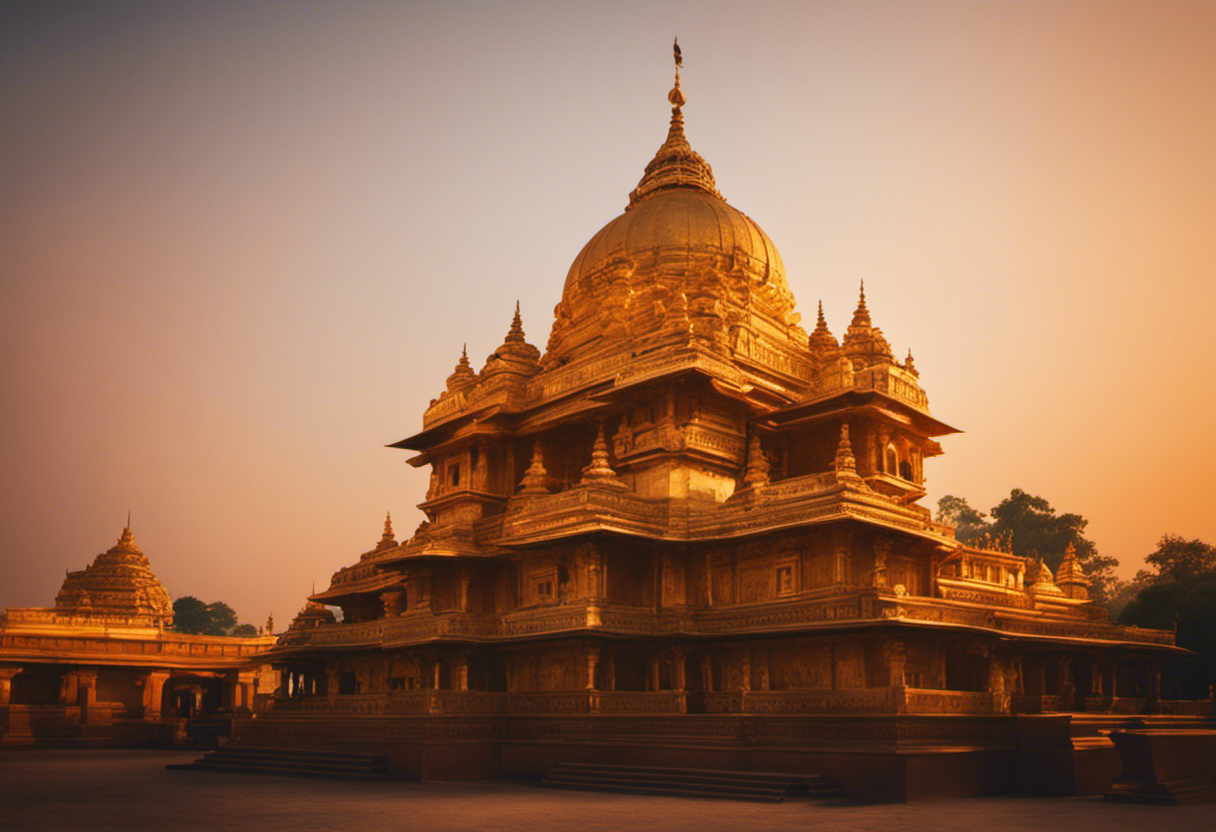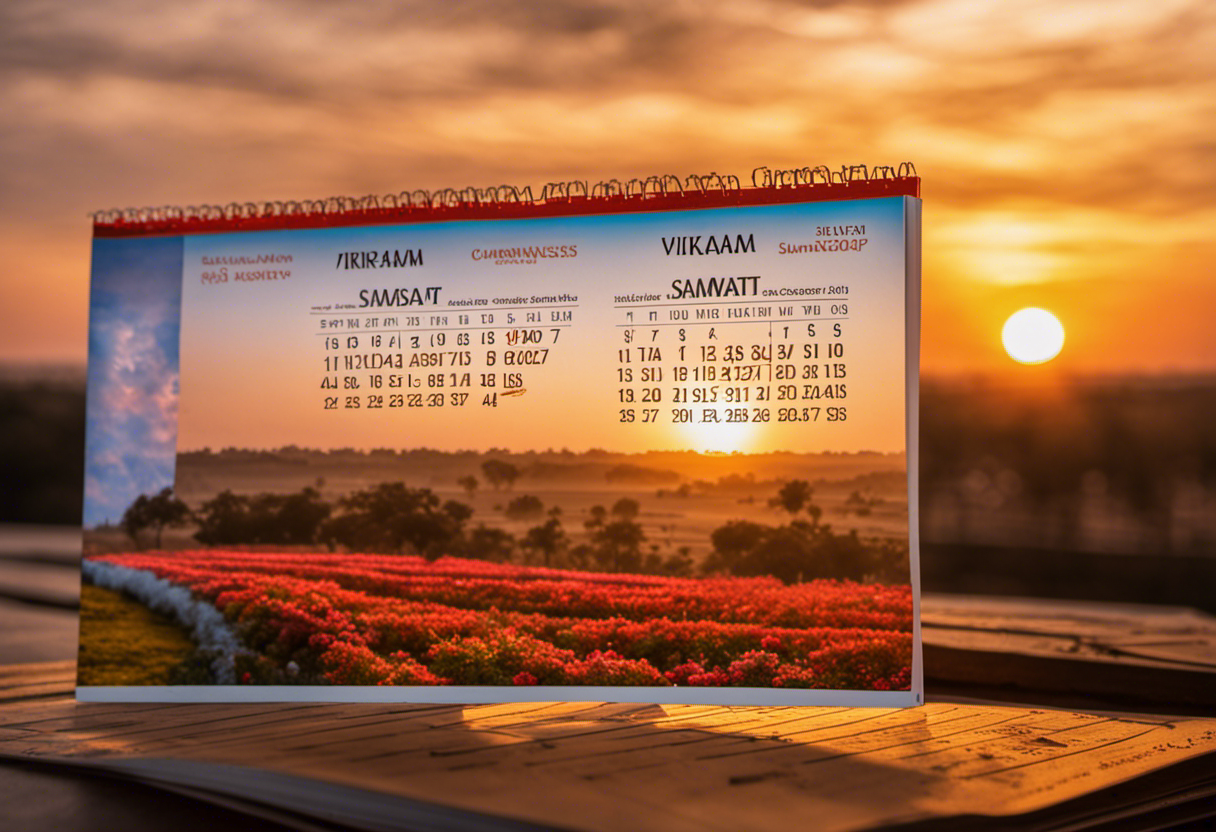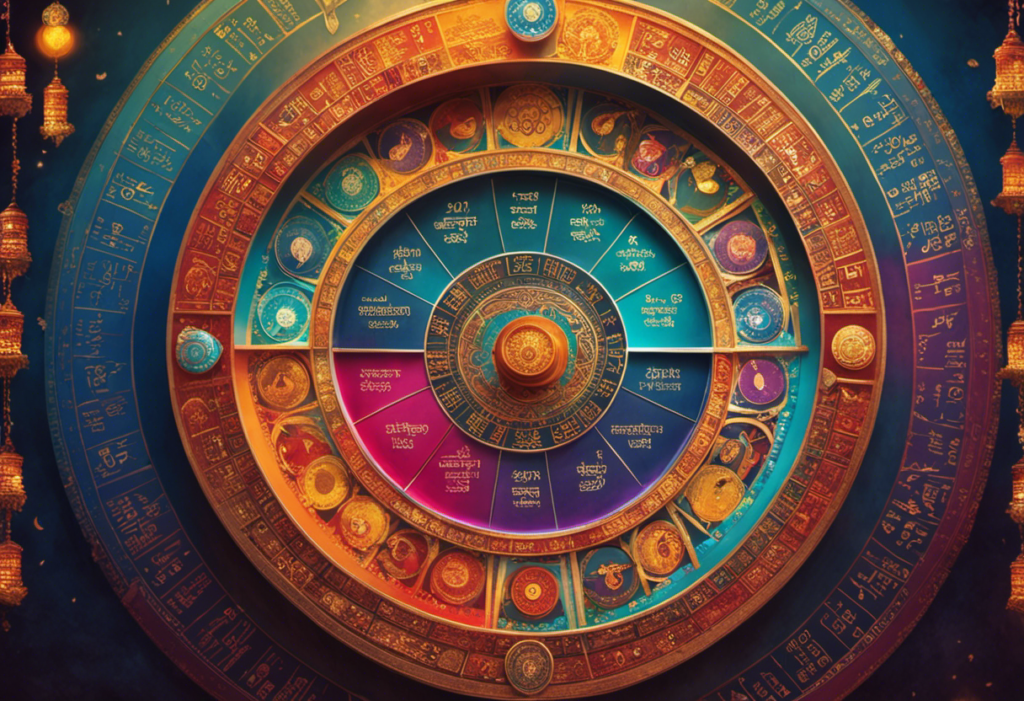In the realm of timekeeping, the ancient calendar system of Vikram Samvat stands as a testament to the enduring legacy of Indian culture.
Rooted in the movements of the sun, this calendar uniquely counts the passing of days from one sunrise to the next.
By delving into the intricacies of Vikram Samvat, this article explores the significance of this approach in relation to other calendar systems, offering a comprehensive analysis that sheds light on the fascinating world of time measurement.
Key Takeaways
- Vikram Samvat follows a sunrise-to-sunrise reckoning with each day beginning and ending with sunrise.
- Calculation of days in Vikram Samvat requires precise understanding of astronomical events and sunrise timings.
- Solar movements play a crucial role in determining the days in Vikram Samvat, aligning with natural cycles and rhythms of the Earth.
- Lunar months and years are integrated into Vikram Samvat, adding a unique cultural dimension to time measurement and influencing traditional celebrations and religious festivals.
The Concept of Vikram Samvat


The concept of Vikram Samvat is a traditional lunar calendar system used primarily in Nepal and some parts of India. It is named after King Vikramaditya of Ujjain, who initiated this calendar in 57 BC. The Vikram Samvat calendar follows the lunar cycle, with each month beginning on the day after the full moon. This calendar system is based on the ancient Hindu calendar and is widely used for religious and cultural purposes.
Vikram Samvat is a lunisolar calendar, meaning it takes into account both the solar and lunar movements. It uses the solar year to determine the length of each month, while the lunar month determines the starting dates. This ensures that the calendar remains in sync with both the solar and lunar cycles.
The historical origins of Vikram Samvat can be traced back to the reign of King Vikramaditya, a legendary ruler known for his wisdom and bravery. He introduced this calendar to commemorate his victory over the Sakas, a western tribe that had invaded Ujjain. The beginning of the calendar, also known as the Vikram Samvat era, marks the year of this victory.
The Importance of Sunrise in Vikram Samvat


As sunrise marks the beginning of a new day, it holds significant importance in the Vikram Samvat calendar system. Sunrise plays a crucial role in various aspects of Vikram Samvat, including sunrise rituals and cultural festivals.
In Vikram Samvat, the day starts and ends with sunrise. This signifies the transition from darkness to light, symbolizing the start of a new day and the opportunity for renewal. Sunrise rituals are an integral part of Vikram Samvat, where people offer prayers and perform religious ceremonies to seek blessings for the day ahead. These rituals help individuals connect with their spiritual selves and set a positive tone for the day.
Furthermore, sunrise is deeply intertwined with cultural festivals in the Vikram Samvat calendar. Many festivals are celebrated during specific months or on particular days based on the alignment of the sun. For example, Makar Sankranti, a popular festival in India, marks the transition of the sun into the zodiac sign of Capricorn. It is celebrated on January 14th each year, coinciding with the winter solstice when the days begin to get longer.
The Calculation of Days in Vikram Samvat


Calculating days in Vikram Samvat requires a precise understanding of astronomical events and the coordination of sunrise timings. The calculation methods used in Vikram Samvat have their historical origins rooted in ancient Hindu astronomy. The Vikram Samvat calendar is a lunisolar calendar, which means that it takes into account both the solar and lunar cycles.
The solar cycle is based on the time it takes for the Earth to complete one orbit around the Sun, while the lunar cycle is based on the time it takes for the Moon to complete one orbit around the Earth.
To calculate days in Vikram Samvat, the calendar system follows a sunrise-to-sunrise reckoning. Each day begins at sunrise and ends at the following sunrise. This method aligns with the traditional Hindu belief that a day is complete when the Sun rises again. The precise timing of sunrise is determined by astronomical calculations that take into account the position of the Sun, the Earth’s rotation, and the observer’s location. These calculations are based on ancient astronomical texts and are performed by expert astronomers.
The Role of Solar Movements in Vikram Samvat


The role of solar movements in Vikram Samvat is crucial for the calculation of days. Unlike modern clocks that divide a day into 24 equal hours, Vikram Samvat follows the solar time, which varies throughout the year due to the Earth’s axial tilt.
Additionally, lunar months and years are also taken into account in Vikram Samvat to ensure the accuracy of the solar calculations. By incorporating these factors, Vikram Samvat provides a comprehensive and precise system for counting days.
Solar Time Vs. Clocks
Solar movements play a crucial role in determining the passage of time in Vikram Samvat. Unlike the standardized timekeeping system used globally today, Vikram Samvat relies heavily on the natural movements of the sun. This traditional Hindu calendar measures time based on the solar year, which is the time it takes for the Earth to complete one orbit around the sun. While modern clocks are designed to measure time with high accuracy, they often overlook the significance of solar movements.
Here are four reasons why solar time is important in Vikram Samvat:
-
Connection to nature: Solar time aligns with the natural cycles and rhythms of the Earth, fostering a deeper connection between individuals and the environment.
-
Cultural heritage: Solar time has been an integral part of Vikram Samvat for centuries, preserving cultural traditions and customs.
-
Astronomical significance: Solar movements hold astronomical significance, marking celestial events such as equinoxes and solstices.
-
Spiritual significance: Solar time is deeply intertwined with religious and spiritual practices, guiding festivals, rituals, and ceremonies.
Lunar Months and Years
A significant aspect of Vikram Samvat is the incorporation of lunar months and years, which are influenced by the movements of the sun. The lunar months in Vikram Samvat follow the phases of the moon, with each month beginning on the day after the new moon.
This lunar calendar is closely linked to traditional celebrations and religious festivals in the Hindu culture. The lunar phases play a crucial role in determining the timing of these festivities.
For example, the festival of Diwali, one of the most important Hindu festivals, is celebrated on the fifteenth day of the lunar month of Kartik. Similarly, other festivals like Holi, Navratri, and Raksha Bandhan are also observed according to the lunar calendar.
This integration of lunar months and years in Vikram Samvat adds a unique cultural dimension to the measurement of time.
Accuracy of Solar Calculations
One important factor in the accuracy of solar calculations in Vikram Samvat is the precise observation of celestial events. The Vikram Samvat calendar is primarily based on the solar movements, particularly the equinoxes and solstices, which mark the changing seasons. These solar calculations ensure the alignment of the calendar with the actual astronomical events, contributing to its accuracy.
The Vikram Samvat system relies on the observation of the sun’s position at sunrise to determine the length of a day. The calendar accuracy is maintained by carefully tracking the sun’s movement and adjusting the calendar as needed. This attention to solar calculations helps to ensure that Vikram Samvat remains in sync with the natural cycles of the sun and provides an accurate measurement of time.
Emotional bullet list:
- Astonishment: Discovering the meticulousness of solar calculations in Vikram Samvat.
- Appreciation: Recognizing the importance of precise observation in maintaining calendar accuracy.
- Fascination: Marveling at the alignment of the calendar with actual astronomical events.
- Gratitude: Acknowledging the efforts made to ensure an accurate measurement of time.
The Significance of Sunrise to Sunrise in Vikram Samvat


The significance of counting days from sunrise to sunrise in Vikram Samvat can be understood through its cultural and religious implications as well as its astronomical accuracy and precision.
Culturally, the sunrise symbolizes the beginning of a new day and is considered a sacred time for prayer and meditation.
Astronomically, counting days from sunrise to sunrise ensures that the day is aligned with the Earth’s rotation and the rising and setting of the sun, providing a more accurate measure of time.
This practice showcases the meticulousness and scientific knowledge of the ancient Vikram Samvat calendar system.
Cultural and Religious Implications
Cultural and religious practices in Vikram Samvat revolve around the profound significance of the sunrise to sunrise cycle. This cycle holds deep cultural and religious implications for the followers of Vikram Samvat. Here are some key aspects that highlight the importance of this cycle:
-
Spiritual Connection: The sunrise is considered a sacred time when individuals can connect with the divine and seek blessings for the day ahead.
-
Ritual Observances: Many religious rituals and ceremonies are performed during the early morning hours, symbolizing a fresh start and purification.
-
Communal Gatherings: Sunrise is often a time for communal prayers, where individuals come together to offer their devotion and share a sense of unity and togetherness.
-
Symbolism of Renewal: The sunrise signifies the beginning of a new day, representing hope, renewal, and the opportunity for personal growth and transformation.
These cultural practices and religious rituals demonstrate the deep-rooted significance of the sunrise to sunrise cycle in Vikram Samvat, enhancing spiritual and communal bonds among its followers.
Astronomical Accuracy and Precision
Due to its emphasis on astronomical accuracy and precision, the practice of counting days in Vikram Samvat from sunrise to sunrise holds immense significance.
Ancient calendars were developed based on observations of celestial bodies and their movements, and Vikram Samvat is no exception. The historical origins of Vikram Samvat can be traced back to Emperor Vikramaditya, who sought to create a more accurate and reliable calendar system.
By using the sunrise as the starting point for each day, Vikram Samvat aligns with the natural rhythm of the Earth’s rotation and the cycle of day and night. This approach ensures that the calendar remains in harmony with the astronomical events and provides a more accurate measure of time.
Comparing Vikram Samvat With Other Calendar Systems


A significant distinction between Vikram Samvat and other calendar systems lies in their respective methods of time reckoning. When comparing Vikram Samvat with the Gregorian calendar, one can observe several differences.
Here are four key points to consider:
-
Lunar vs Solar: The Vikram Samvat follows a lunar calendar, where months are based on the phases of the moon, while the Gregorian calendar is a solar calendar, with months aligned with the Earth’s orbit around the sun.
-
Cultural Significance: Vikram Samvat holds immense cultural significance in Hinduism and is widely followed in India and Nepal. It is used to mark religious festivals, auspicious occasions, and historical events.
-
Different Start Points: Vikram Samvat starts from the coronation of King Vikramaditya of Ujjain, while the Gregorian calendar begins from the birth of Jesus Christ. This difference in starting points reflects the cultural and historical contexts of each calendar.
-
Different Year Lengths: Vikram Samvat has shorter years compared to the Gregorian calendar. This is due to the fact that it follows a lunar month, which is approximately 29.5 days, resulting in a shorter year when compared to the solar-based Gregorian calendar.
These differences between Vikram Samvat and the Gregorian calendar highlight the unique cultural significance and distinct methods of time reckoning associated with each calendar system.
Conclusion
In conclusion, the Vikram Samvat calendar system follows the unique practice of counting days from sunrise to sunrise. This approach is based on the significance of the sun’s movements and holds great importance in the Hindu culture.
By comparing Vikram Samvat with other calendar systems, we can appreciate its distinctiveness and the cultural significance it holds. The sunrise to sunrise method of counting days adds a fascinating dimension to the Vikram Samvat calendar, making it a truly unique and intriguing system.




